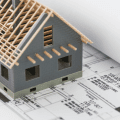Are you considering building an Accessory Dwelling Unit (ADU) on your property? ADUs are becoming increasingly popular as a way to make the most of your lot and generate extra income. In this article, we’ll cover everything you need to know about building an ADU, including eligibility requirements, regulations, financing options, and more.
Before we dive into the details, let’s define what an ADU is and discuss some of the benefits of building one.
Benefits of building an ADU
There are many benefits to building an ADU, including:
Extra income: You can rent out the ADU to generate extra income.
Affordable housing: ADUs can provide affordable housing options for renters or family members.
Flexible living space: ADUs can be used as a home office, guest house, or living space for multigenerational households.
Increased property value: Adding an ADU can increase the value of your property.
What is an ADU?
Let’s take a closer look at what an ADU is and some of the common traits and design challenges.
An accessory unit is a secondary living unit that is located on the same lot as a primary residence. ADUs are typically smaller than the main house and have their own entrance, kitchen, and bathroom.
Common traits and design challenges of ADUs
ADUs can be attached or detached from the main house and can be designed in a variety of styles. However, there are some common design challenges to consider, such as:
Size: ADUs are typically smaller than the main house and must comply with local zoning laws.
Parking: Additional parking may be required for the ADU.
Utilities: ADUs require separate utilities, such as water, electricity, and gas.
Privacy: ADUs must be designed to provide privacy for both the main house and the ADU.
Distinguishing characteristics of ADUs
ADUs are distinguished from other types of secondary living units by their location on the same lot as the primary residence. They are also typically smaller and have their own entrance, kitchen, and bathroom.
Can I Build An Adu On My Property
Yes, you can build an ADU on your property, but you need to follow certain rules and regulations. Here are some things to keep in mind:
Eligibility for building an ADU
Now that we know what an ADU is, let’s discuss the eligibility requirements for building one.
Requirements for building an ADU
The requirements for building an ADU vary depending on your location. Some common requirements include:
Zoning: Your property must be zoned for residential use and meet the minimum lot size requirements.
Building codes: Your ADU must comply with local building codes and safety regulations.
Permits: You will need to obtain a building permit before construction can begin.
Pilot areas for ADU development
Some cities have designated pilot areas for ADU development. These areas may have more lenient zoning laws and building codes to encourage ADU construction.
Number of ADUs allowed per property
The number of ADUs allowed per property also varies depending on your location. Some cities allow only one ADU per property, while others allow multiple ADUs.
Building an ADU
Now that we know the eligibility requirements for building an ADU, let’s discuss the cost, financing options, and return on investment.
The cost of building an ADU
The cost of building an ADU varies depending on the size, design, and location of the unit. According to, the cost of building an ADU in Texas ranges from $50,000 to $150,000.
Financing options for building an ADU
There are several financing options available for building an ADU, including:
Cash: If you have the funds available, paying cash for the ADU is the simplest financing option.
Home equity loan: You can take out a home equity loan to finance the construction of the ADU.
Construction loan: A construction loan is a short-term loan that covers the cost of building the ADU.
FHA 203(k) loan: This loan is designed for homebuyers who want to purchase a property and make improvements, such as building an ADU.
Return on investment for building an ADU
Building an ADU can provide a good return on investment, especially if you plan to rent out the unit. According to, the return on investment for building an ADU in Texas ranges from 8% to 15%.
Regulations for building an ADU
Now that we know the cost and financing options for building an ADU, let’s discuss the regulations you need to follow.
Building permit requirements. You will need to obtain a building permit before construction can begin. The permit process typically involves submitting plans prepared by an Illinois-licensed architect or structural engineer.
Review process for building permit applications
The building permit application will be reviewed by the local building department to ensure compliance with local building codes and safety regulations.
Designing an ADU
Now that we know the regulations for building an ADU, let’s discuss the design process.
Finding a designer and builder
You will need to find a designer and builder to help you with the design and construction of the ADU. Look for professionals with experience in ADU construction.
Basic building science
The design of the ADU should take into account basic building science principles, such as energy efficiency and ventilation.
Options for using or renting the ADU. Consider your options for using or renting the ADU. Will you use it as a home office or guest house, or will you rent it out for extra income?
Types of ADUs
There are several types of ADUs to choose from, including attached or detached ADUs and Junior ADUs (JADUs).
Attached or detached ADUs
Attached ADUs are connected to the main house, while detached ADUs are separate structures.
Junior ADUs (JADUs)
JADUs are smaller than traditional ADUs and are typically located within the main house.
Benefits of building an ADU
Let’s review some of the benefits of building an ADU.
Affordable housing options
ADUs can provide affordable housing options for renters or family members.
Rental income potential
You can rent out the ADU to generate extra income.
Flexible living space for multigenerational households
ADUs can be used as a home office, guest house, or living space for multigenerational households.
How to write an effective real estate ad for an ADU
If you plan to rent or sell the ADU, you will need to write an effective real estate ad. Here are some tips for writing a property description:
Tips for writing a property description
- Highlight the unique features of the ADU, such as the location, size, and amenities.
- Use descriptive language to create a picture in the reader’s mind.
- Be honest and transparent about the condition of the ADU.
Elements of a Real Estate Advertisement
A real estate advertisement should include a catchy headline, a brief description of the ADU, high-quality photos, and contact information for the seller or landlord. Make sure to highlight the unique features of the ADU and emphasize its potential as a source of rental income or flexible living space.
Examples of ADU programs
There are several examples of ADU programs that can help homeowners with the design and construction of their ADU. Here are a few examples:
- Standard ADU Plans Program: This program offers pre-approved ADU plans that meet local building codes and safety regulations.
- California Department of Housing and Community Development: This department offers resources and information for homeowners interested in building an ADU in California.
- Additional Dwelling Units (ADU) Ordinance – City of Chicago: This ordinance allows for the construction of ADUs in certain areas of Chicago.
- Accessory Dwelling Units – LA County Planning: This program provides information and resources for homeowners interested in building an ADU in Los Angeles County.
Challenges of building an ADU
While there are many benefits to building an ADU, there are also some challenges to consider. Some common stumbling blocks include:
- Zoning laws: Zoning laws can restrict the size, location, and design of ADUs.
- Building codes: ADUs must comply with local building codes and safety regulations, which can add to the cost and complexity of construction.
- Permit requirements: Obtaining building permits can be a time-consuming and expensive process.
- Financing: Financing the construction of an ADU can be challenging, especially if you don’t have the funds available to pay for it upfront.
However, there are strategies to overcome these challenges, such as working with experienced professionals, researching local regulations, and exploring financing options.
Conclusion
Building an ADU can be a valuable investment for homeowners, providing extra income, affordable housing options, and flexible living space. While there are some challenges to consider, with the right planning and resources, building an ADU can be a rewarding and profitable endeavor. Consider the eligibility requirements, regulations, financing options, and design challenges when planning to build an ADU.







